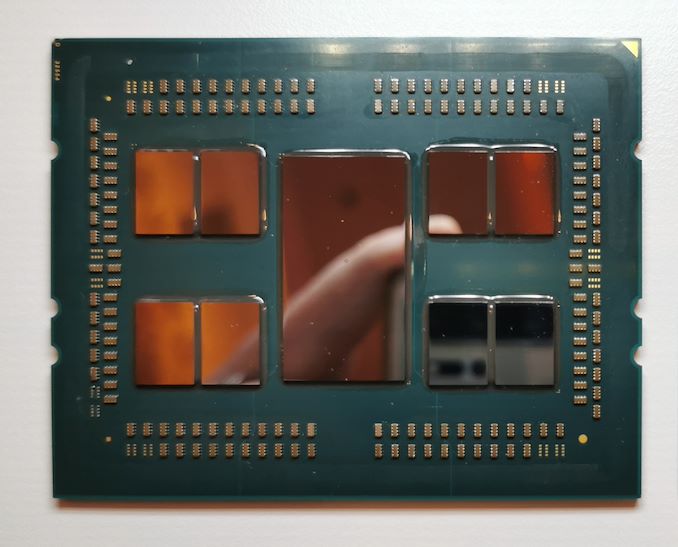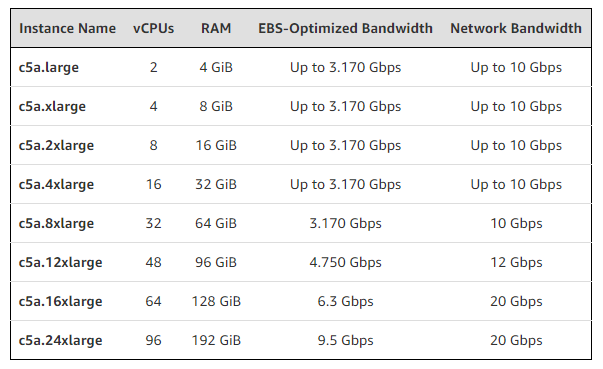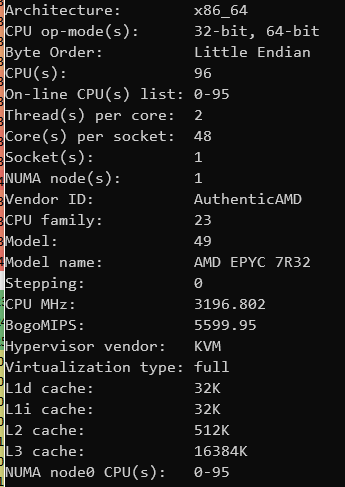After many months of waiting, Amazon today has finally made available their new compute-oriented C5a AWS cloud instances based on the new AMD EPYC 2nd generation Rome processors with new Zen2 cores.
Amazon had announced way back in November their intentions to adopt AMD’s newest silicon designs. The new C5a instances scale up to 96 vCPUs (48 physical cores with SMT), and were advertised to clock up to 3.3GHz.
The instance offerings scale from 2 vCPUs with 4GB of RAM, up to 96 vCPUs, with varying bandwidth to elastic block storage and network bandwidth throughput.
The actual CPU being used here is an AMD EPYC 7R32, a custom SKU that’s seemingly only available to Amazon / cloud providers. Due to the nature of cloud instances, we actually don’t know exactly the core count of the piece and whether this is a 64 or 48- core chip.
We quickly fired up an instance to check the CPU topology, and we’re seeing that the chip has two quadrants populated with the full 2 CCDs with four CCXs in total per quadrant, and two quadrants with seemingly only a single CCD populated, with only two CCXs per quadrant.
I quickly ran some tests, and the CPUs are idling at 1800MHz and boost up to 3300MHz maximum. All-core frequencies (96 threads) can be achieved at up to 3300MHz, but will throttle down to 3200MHz after a few minutes. Compute heavy workloads such as 456.hmmer will run at around 3100MHz all-core.
While it is certainly possible that this is a 64-core chip, Amazon’s offering of 96 vCPU metal instances point out against that. On the other hand, the 96 vCPU’s configuration of 192GB wouldn’t immediately match up with the memory channel count of the Rome chip unless the two lesser chip quadrants also each had one memory controller disabled. Either that, or there’s simply two further CCDs that aren’t can’t be allocated – makes sense for the virtualised instances but would be weird for the metal instance offering.
The new C5a Rome-based instances are available now in eight sizes in the US East (N. Virginia), US East (Ohio), US West (Oregon), Europe (Ireland), Europe (Frankfurt), Asia Pacific (Sydney), and Asia Pacific (Singapore) regions.
Related Reading:
- Amazon's Arm-based Graviton2 Against AMD and Intel: Comparing Cloud Compute
- The AMD Ryzen Threadripper 3960X and 3970X Review: 24 and 32 Cores on 7nm
- AMD’s New 280W 64-Core Rome CPU: The EPYC 7H12
- AMD Rome Second Generation EPYC Review: 2x 64-core Benchmarked
- AMD Zen 2 Microarchitecture Analysis: Ryzen 3000 and EPYC Rome
from AnandTech https://ift.tt/2Y2W7hZ
via IFTTT




0 comments:
Post a Comment